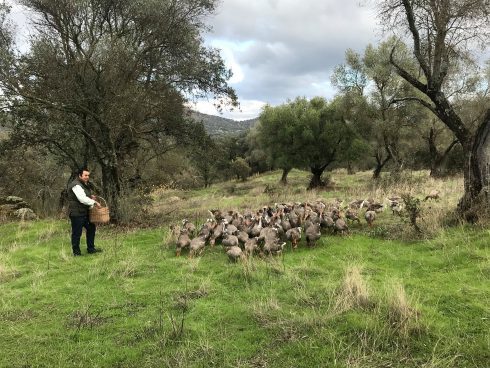For many this buttery, rich delicacy is one of the most desired luxury food items in the culinary world, for others its method of manufacture represents the ultimate in cruelty.
Traditionally, foie gras is produced by a technique perfected in France known as ‘gavage’ in which geese are force-fed by sticking a tube down their throat and stuffing it with more grain than the bird would naturally eat in a lifetime.
However at a remote farm in Extremadura foie gras is produced ethically by allowing geese to gorge naturally on olives and acorns which swell their livers with large fatty deposits, doubling their body weight in preparation for flying south for the winter.
This ethical foie gras is produced on a farm outside Badajoz by Eduardo Sousa who describes the method as ‘seasonal feasting’ instead of the traditional force-feeding.
Sousa insists that geese by nature have the capacity to create and store fat in their livers, but this natural connection has been broken over the years after Greeks and Romans began to force feed geese with figs to fatten them up.
Instead of force-feeding their geese, Sousa allows them to feast on the wild foods they find around them in nature.

Sousa said: “Windfall fruit, wild seeds and grasses and, most importantly, acorns – the same acorns, rich in cholesterol-reducing oleic acid, that form the diet of Extremadura’s famous Ibérico pig,
“Our product’s superbly delicate flavour and characteristic golden colour, which derives mainly from wild yellow lupin seeds, is a direct consequence of the birds’ varied natural diet and their high quality of life, allowing them to fly and graze at will.”
The 200-year-old farm now produces around 2,000 jars of foie gras from 1,000 geese annually.

“A whole year is required to produce a small, uniformly coloured, regular and fine-textured foie gras,” said Sousa.
He explained that wild geese still fly over the family farm, which is situated beneath the birds’ migration path.
“Our free-range geese are partly domesticated, but are visited annually by their wild cousins, thus renewing the gene pool and maintaining the feeding instincts of the established flock.”
READ MORE:
